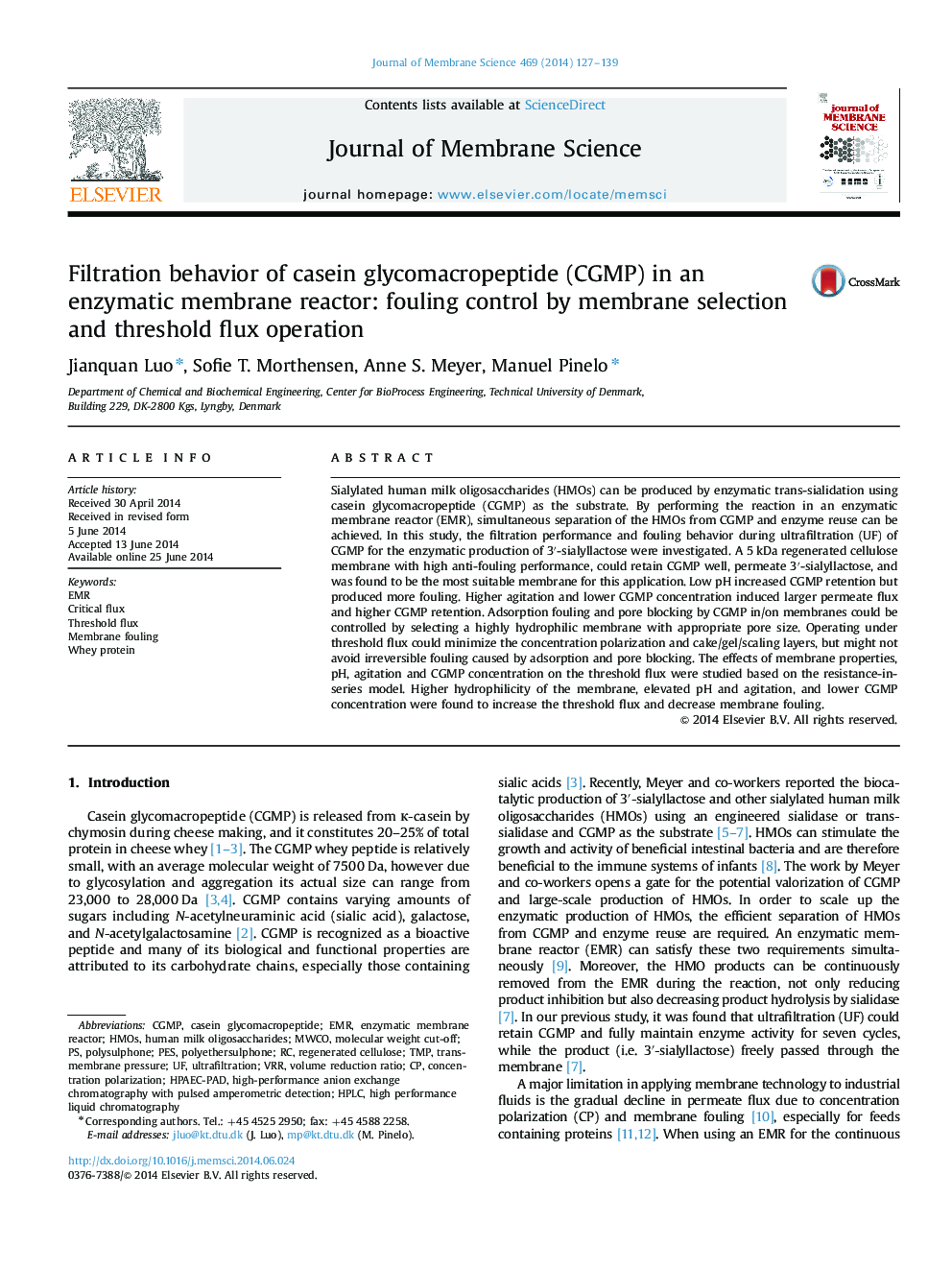| کد مقاله | کد نشریه | سال انتشار | مقاله انگلیسی | نسخه تمام متن |
|---|---|---|---|---|
| 633489 | 1456030 | 2014 | 13 صفحه PDF | دانلود رایگان |

• 5 kDa regenerated cellulose membrane can be used to separate CGMP and sialyllactose.
• Lower pH caused higher CGMP retention, lower osmotic pressure but higher fouling.
• Adsorption and pore blocking of CGMP can be controlled by membrane selection.
• Threshold flux can minimize the external fouling but cannot avoid internal fouling.
• Threshold flux was governed by barrier force, Brownian and shear-induced diffusions.
Sialylated human milk oligosaccharides (HMOs) can be produced by enzymatic trans-sialidation using casein glycomacropeptide (CGMP) as the substrate. By performing the reaction in an enzymatic membrane reactor (EMR), simultaneous separation of the HMOs from CGMP and enzyme reuse can be achieved. In this study, the filtration performance and fouling behavior during ultrafiltration (UF) of CGMP for the enzymatic production of 3′-sialyllactose were investigated. A 5 kDa regenerated cellulose membrane with high anti-fouling performance, could retain CGMP well, permeate 3′-sialyllactose, and was found to be the most suitable membrane for this application. Low pH increased CGMP retention but produced more fouling. Higher agitation and lower CGMP concentration induced larger permeate flux and higher CGMP retention. Adsorption fouling and pore blocking by CGMP in/on membranes could be controlled by selecting a highly hydrophilic membrane with appropriate pore size. Operating under threshold flux could minimize the concentration polarization and cake/gel/scaling layers, but might not avoid irreversible fouling caused by adsorption and pore blocking. The effects of membrane properties, pH, agitation and CGMP concentration on the threshold flux were studied based on the resistance-in-series model. Higher hydrophilicity of the membrane, elevated pH and agitation, and lower CGMP concentration were found to increase the threshold flux and decrease membrane fouling.
Journal: Journal of Membrane Science - Volume 469, 1 November 2014, Pages 127–139